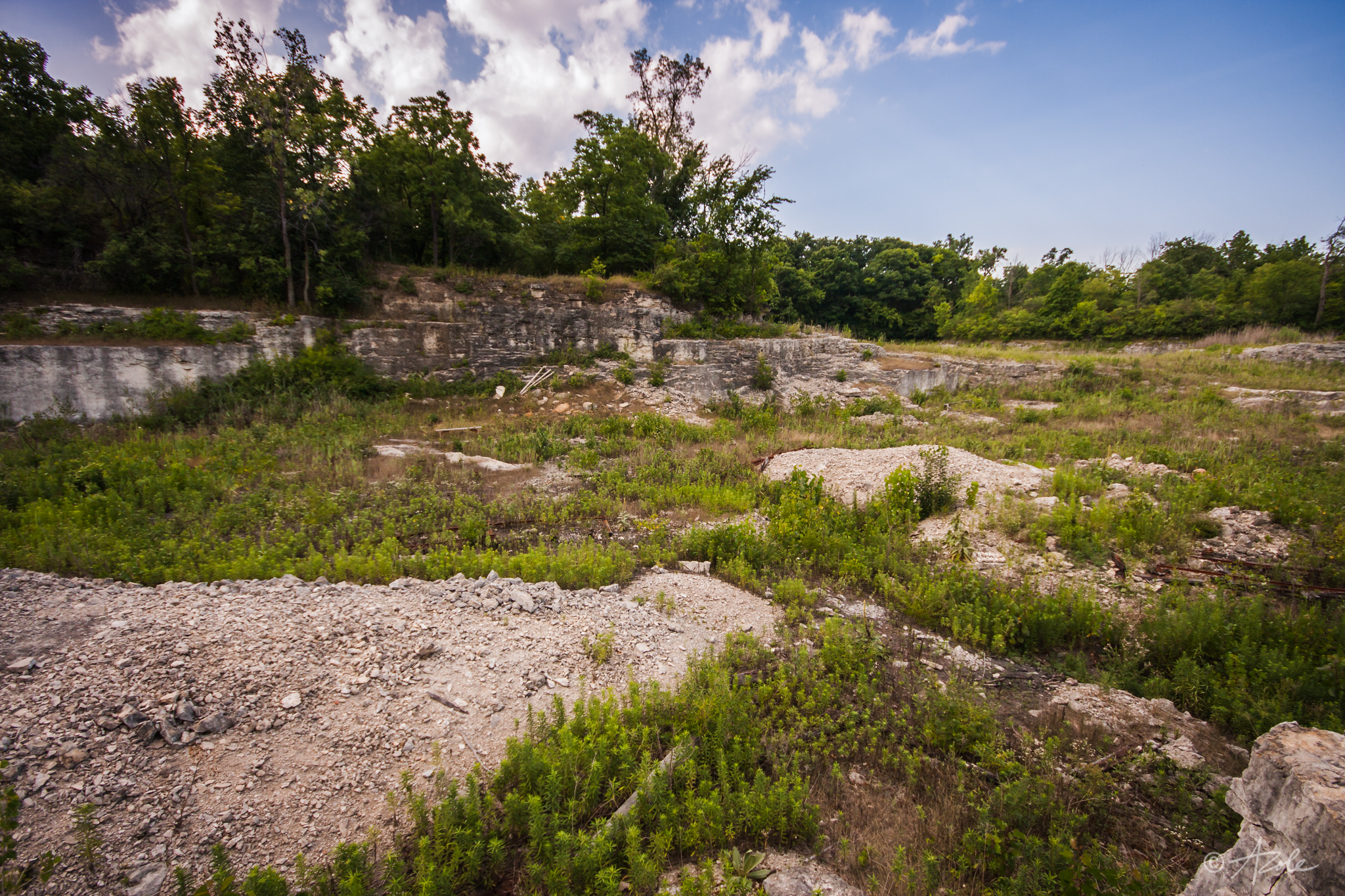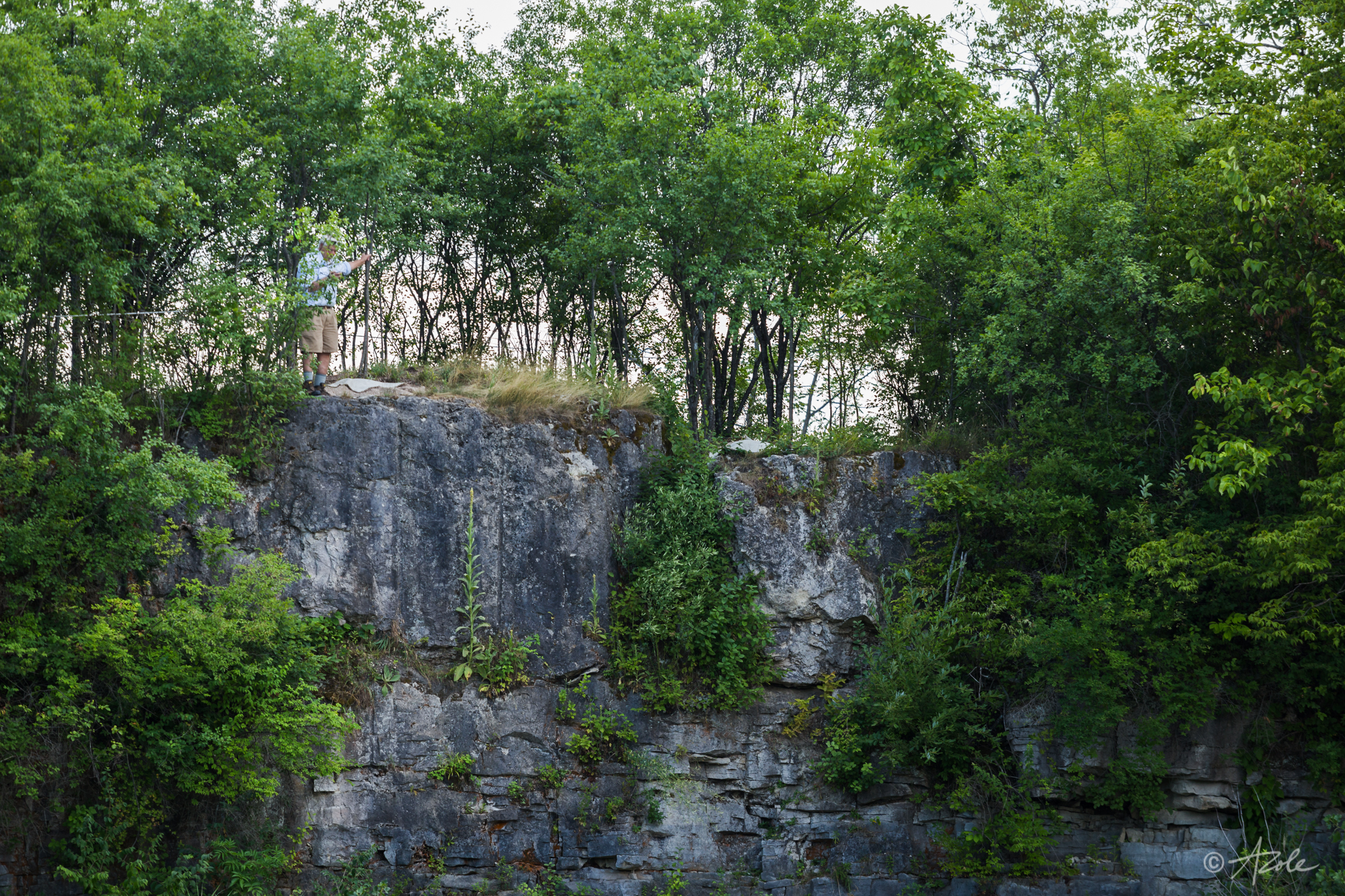A few things are hard to find in northwest Ohio, a good ski slope, and a rock-climbing venue. We can’t help you with skiing, but Sawyer Quarry Nature Preserve is a rare local opportunity to climb.
Sawyer Quarry has had many lives, starting as an industrial operation that fueled the early industrial boom in northwest Ohio, morphing into a private family recreation spot, and with a life now as a unique Wood County community treasure.
The property includes the old stone quarry walls and dry basin along with 60 acres of woods. Visit in April and May to walk the quarry rim path and see the ground covered with wildflowers: trillium, bloodroot, spring beauties, and trout lily. Then, practice some rock climbing in the old quarry. Walls of the quarry are designated for aid climbing (climbing with ropes and pitons) and bouldering (free climbing with no tools). The bottom of the quarry is accessible by stairs and is open for exploring.
The Sawyer family bought the land in 1883 and started to quarry sedimentary rock in 1891. The industrial stone business continued through 1930. After the business closed during the Great Depression, the quarry and surrounding woods remained a favorite spot for generations of the Sawyer family. Family members built structures on the property for summer recreation and for full-time living. In 1999, the Ann B. Sawyer family decided to permanently preserve the entire quarry, woods, and buildings through the Black Swamp Conservancy.
Fifteen years after taking it into protection, the Conservancy helped the family donate their property to the Wood County Park District. The old family buildings have now been converted to park offices that include a history of the preserve, interpretive center, and wildlife observation windows. The park is open every day from 8:00 a.m. to 30 minutes after sunset.
Black Swamp Conservancy holds a conservation agreement on the land and continues to protect this unique piece of local history from development, ensuring its permanent preservation as a community resource.





